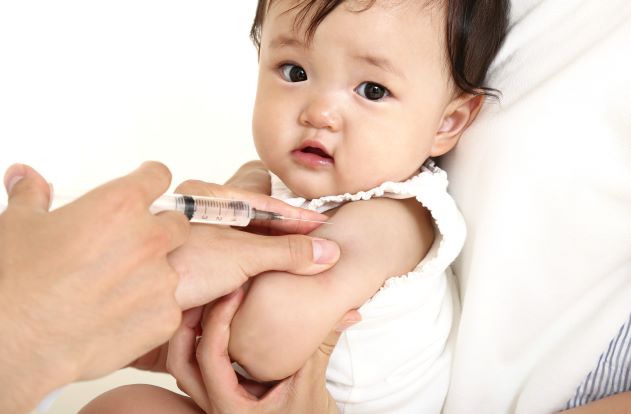A UNSW Sydney-led medical research team has called for a new vaccine, improved strategies and enhanced monitoring to combat serious complications from childhood pneumonia.
The researchers examined the impact of the 13-valent pneumococcal conjugate vaccine (13vPCV) on childhood pneumonia and empyema – complicated pneumonia – after its introduction to the Australian National Immunisation Program about a decade ago.
The new study, published in Thorax recently, found that while 13vPCV resulted in a 21 per cent decrease in childhood pneumonia hospitalisations, there was a contemporaneous 25 per cent increase in admissions for empyema. This incidence data for childhood empyema hospitalisations is similar to that reported in other countries. Approximately 7000 Australians under the age of 18 are hospitalised with pneumonia each year.
Senior author Professor Adam Jaffe, Head of the School of Women’s and Children’s Health at UNSW Medicine & Health, said the researchers’ findings suggested an emergence of non-vaccine serotypes – those which 13vPCV does not cover.
13vPCV was introduced to cover the 13 most common serotypes responsible for invasive pneumococcal infection, extending coverage to six additional serotypes including 1 and 3.
The previous vaccine (7vPCV) covered seven serotypes. A serotype is a distinct variation within a bacteria species.
Prof. Jaffe said: “Although we found a substantial reduction in serotype 1, serotype 3 is now the predominant organism which causes childhood empyema – in 76 per cent of cases – so, efforts must be made to create a vaccine which is more effective against serotype 3.
“In fact, Australia recently changed the vaccination dosage schedule to try and improve the effectiveness of 13vPCV against serotype 3, but we need to continue monitoring patients using molecular techniques to see if this change has had an impact.
“Childhood bacterial pneumonia and empyema are potentially preventable diseases through vaccination. So, if Australia can develop an effective vaccine, we could prevent children from being hospitalised with pneumonia and empyema.”
Empyema is infected fluid around the lungs and about 1 per cent of children hospitalised with pneumonia develop it.
Although children are highly unlikely to die from empyema, they can expect a long stay in hospital for treatment with antibiotics and surgery, or the insertion of a drain. If adults develop empyema, about a third are likely to die.
Continuing enhanced surveillance needed
The researchers conducted a similar study during the period of the superseded 7vPCV. Their new study – which took four years to complete – is part of a broader research project on 13vPCV.
“Our new study had two parts,” Prof. Jaffe said. “We analysed national hospitalisations for childhood empyema and childhood pneumonia, then we conducted an enhanced surveillance study on children with empyema.”
The first part of the research used publicly available hospitalisations data – about 36,000 admissions – to assess whether the introduction of 13vPCV changed how many children were admitted to hospital with pneumonia and empyema.
The enhanced surveillance study involved the collection of blood and lung fluid samples from 401 children with empyema from February 2015 to September 2018.
The children were receiving treatment in 11 major children’s hospitals across Australia.
Most children were boys (208 or 52 per cent) and the median age was four years old.
The researchers then conducted molecular testing on these samples and compared the results to their previous study undertaken during the period of 7vPCV.
The multidisciplinary team included Dr Nusrat Homaira, of the Discipline of Paediatrics at UNSW Medicine & Health, and paediatric research nurse Roxanne Strachan of Sydney Children’s Hospital.
Prof. Jaffe said: “Our new research is the first of its kind in Australia – so, we now have the best data available for complicated childhood pneumonia to help guide future vaccination introductions and improve vaccine strategies.
“We are currently working on our larger study, of which this was a subset, to examine the effectiveness of 13vPCV on children with bacterial pneumonia. We will need to repeat the study in a few years’ time to help with monitoring.
“In the meantime, it would make a big difference if molecular testing of patients’ lung fluid was routine in laboratories, because that would ensure we had the best real-time data available which will help rationalise antibiotic choice; also, we would have no need to seek funding to undertake this much-needed research.”
Source: UNSW Newsroom

















